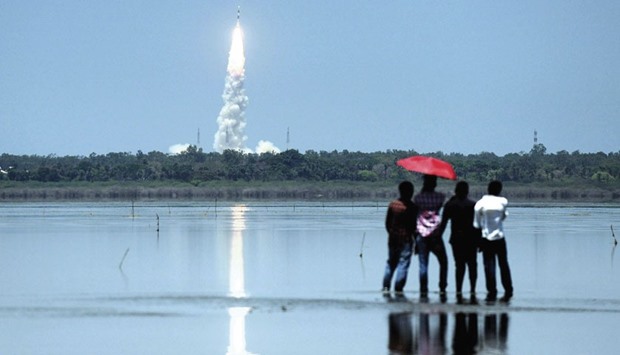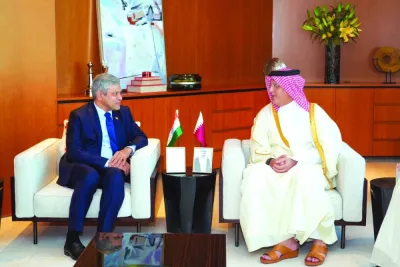
Bystanders look on as ISRO’s navigation satellite IRNSS-1G, on board the Polar Satellite Launch Vehicle is launched from Sriharikota yesterday.
India yesterday took the final step towards completing its own satellite navigation system, a development heralded by the prime minister as making the nation self-reliant in the field of space-based positioning.
The seventh satellite to make up the Indian Regional Navigation Satellite System (IRNSS) was launched into space via a rocket from Sriharikota spaceport at 12.50pm.
However, unlike the widely used US’ Global Positioning System (GPS) or Russia’s GLONASS, the Indian system will provide positioning information only in India and 1,500 sq km around its periphery.
“Until now we were dependent on their systems, now we are self-reliant,” Prime Minister Narendra Modi said in a televised congratulatory message to scientists at the Indian Space Research Organisation (ISRO).
“With this successful launch, we will determine our own paths powered by our technology. This is a great gift to our people from the scientists,” he said.
“The world will now know this system as Navic, that is Navigation with Indian Constellation (of satellites),” Modi said. It is similar to the Hindi word Navik, which means sailor.
“Our efforts will help not only India but we can help fellow Saarc (South Asian Association for Regional Co-operation) nations as well.”
The system, which will be fully operational in a month’s time, offers applications for marine and air navigation and can be integrated into mobile phones for use by hikers or fishermen, for example.
Over the next six months, all the IRNSS satellites will be stabilised in their final orbital positions, ISRO spokesman Deviprasad Karnik said.
The first IRNSS satellite was put in orbit in 2013. At first, only ISRO’s test receivers will make use of the IRNSS signals and data.
Besides navigation on land, sea and air, it could be used for disaster management, mapping and vehicle tracking and fleet management.
Navic is expected to be more reliable for the region than GPS, Indian scientists said. ISRO officials told local media that the cost of the seven-satellite system was Rs14.2bn ($210mn).
India has one of the world’s largest constellations of remote sensing and communication satellites, which are used for broadcasting, weather forecasting and geo-mapping applications.
ISRO scientists have been riding high since an Indian spacecraft successfully reached Mars in 2014 on a shoe-string budget, winning Asia’s race to the Red Planet and sparking an outpouring of national pride.


